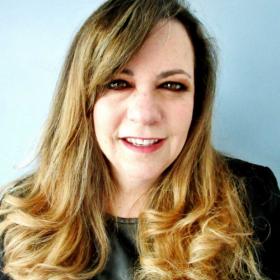Our Stories Matter
Author

I still remember that morning clearly even though it was over 20 years ago. It was a beautiful fall day, the kind associated with homecoming parades and football—at least in the little town where I was working as a teacher. I’d just moved to Southwest Ohio from New England a few weeks ago and was really happy to have a job working with at-risk high school students, something I’d done for several years in several different schools.
I opened the door to my classroom and simply stood in shock. My classroom was covered in blood— “KKK” and “Jew” smeared on the chalkboard and desks. Trash was emptied all over the room. My desk had been ransacked as well.
I’d been told not to let students know that I was Jewish by several acquaintances—that the school was in the heart of KKK country. I didn’t take pains to hide my religion, nor did I talk about it. Being Jewish was more cultural than religious in my family, and I’d married someone who wasn’t Jewish and had his last name. Still, I must have talked about it with a student or shared it in some way I wasn’t aware of.
My first reaction to this wasn’t anger. It was actually embarrassment—had I done something wrong? Why was I singled out for this? I was new to the school and didn’t really want to make a scene. What I really wanted was to make it all go away. Not tell anyone else what happened—clean the room myself.
And then I did get angry.
I walked down to the assistant principal’s office and asked him to come view my room. There was no urgency on his part, just a kind of annoyance. He put his head in my classroom, looked around, and said, “We’ll get the janitor to clean it up. You’ll be fine.”
And that was it. The choice was clear. Stay quiet, do my job, make things easy for all involved, or make a fuss. Insist on finding the culprits and having them punished. Make it clear, more than ever, that I was different.
I chose to speak, to talk to the superintendent, to explain how I felt, how I was scared. And still nothing ever happened. Again and again, I was told that it meant nothing, that people didn’t really hate Jews (and me by extension) and that I was making too much of the incident.
I’ve never forgotten how I felt that day. Scared. Alone. Helpless. Angry.
I can’t imagine an incident such as mine being ignored in this age of awareness and smartphones. But we still have a way to go to make sure that we all feel safe in bringing our authentic selves to work. It’s way too easy to accept that everyone feels safe in showing who they really are.
That’s where we come in. We, in HR, can help make sure that we are protecting those who need protection, advocating for those who can’t do it themselves, and listening to those who have stories to tell. Most importantly, we can make sure that diversity, equity, and inclusion are not merely words but are descriptions of what we value and how we act.
Want to help nurture a diverse, equitable, and inclusive culture? Consider taking HCI’s Strategic Diversity, Equity, and Inclusion (SDEI) course. You’ll learn to advocate, listen and get comfortable with DEI with our immediate takeaways for you and your team. We're here to help.
Author

View SDEI Course Brochure
Learn more about how you make everyone's story matter.
View the course brochure: SDEI Certification Program Brochure.

